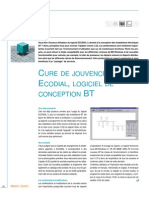Unlock File Manually Backup
When you create a backup using Windows Backup, you should use the Restore Files wizard to restore the files. If you can't use the Restore Files wizard (for example, when you're using a computer that’s not running Windows Vista or Windows 7), you can manually extract files from a backup by following these steps:
1.Open the location where your backup is saved.
Backup and Restore Office 2016 Activation or Product Key. After you install Microsoft Office 2016 and activate it, you may want to back up its activation or product key in case you need to reinstall Office 2016 in the future.
The files in your backup are saved as zip files.
- Right-click the backup file (a file with the Windows Backup icon and the name of your computer), and then click Open.
Unlock File Manually Backup Password
To manually extract files that are larger than 200 MBs
If a file is larger than 200 MBs, it will be split into multiple zip files. You will need to extract and then combine these files following these steps:
Fire Alarm Systems Design. Part1:2013 a guide to. AVAILABLE TO. THE APOLLO APP. It is not to be used as a substitute for BS5839 which should be read in full. In order to help identify the relevant sections, each diagram includes a reference to BS5839 Part 1. Section 1 Clause 5. 
1.Open the location where your backup is saved.

- Find the zip files that contain the file you want to extract. For example, if you're trying to extract a video file named BirthdayParty, you would find the zip files that contain files with that name.
- Create a folder on your desktop to extract the files to.
Since the files all have the same name, you'll need to rename them as you extract them.
- Extract the first file into the folder you created on your desktop and then rename the file.
Repeat this step until you have extracted all of the files, making sure that you name them similarly. For example, if you have four files for the BirthdayParty video, name them BirthdayParty1, BirthdayParty2, BirthdayParty3, and BirthdayParty4.
- Open the Command Prompt window by clicking the Start button. In the search box, type Command Prompt, and then, in the list of results, click Command Prompt.
- Type the following command: copy /b filename*.file_extension new_filename.file_extension
For example, copy /b BirthdayParty*.avi BirthdayPartyAll.avi